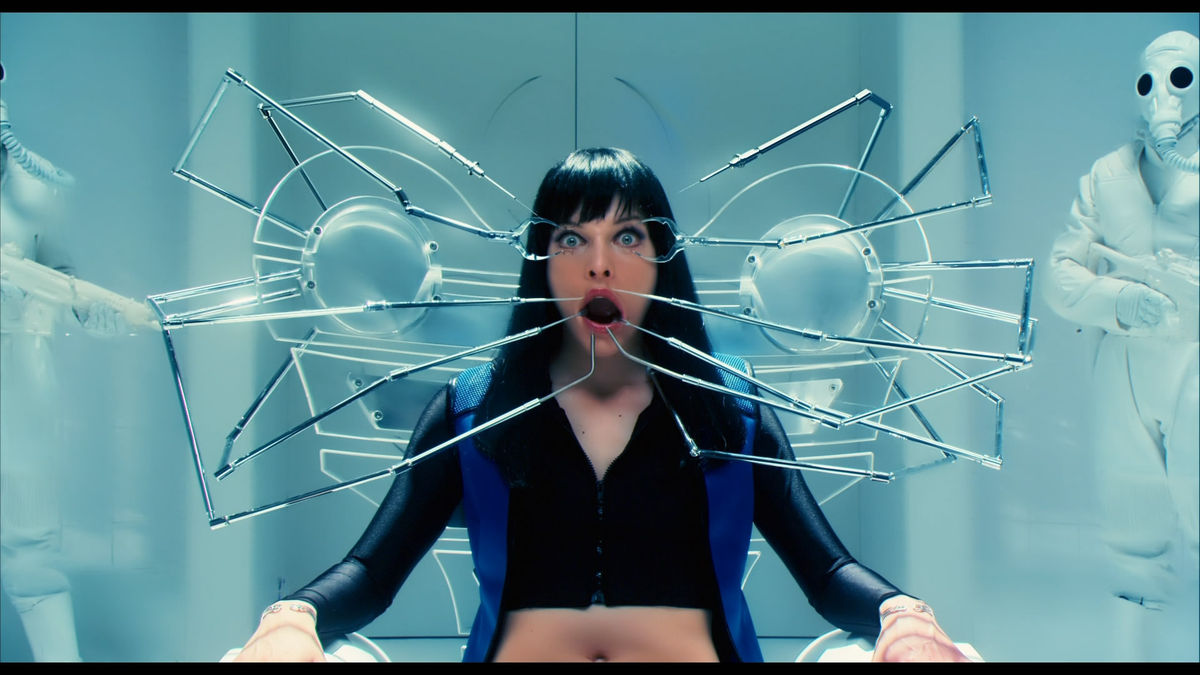Ultraviolet (2006): A Futuristic Action Film with Style Over Substance
Ultraviolet (2006) is a science fiction action film written and directed by Kurt Wimmer, known for his earlier dystopian action piece Equilibrium (2002). Starring Milla Jovovich in the lead role, the film presents a sleek, stylized vision of the future, blending martial arts, gunplay, and high-concept visuals. While Ultraviolet strives for a bold, graphic-novel-inspired aesthetic, it ultimately falters due to a weak script, underdeveloped characters, and an overreliance on CGI.
Set in the late 21st century, the film introduces a dystopian world ruled by a totalitarian government known as the ArchMinistry. A virus known as Hemoglophagia has spread among the population, transforming some humans into enhanced beings with vampire-like abilities—including heightened speed, strength, and agility—but also a shortened lifespan. These infected individuals, called "hemophages," are hunted and persecuted by the government.

Milla Jovovich plays Violet Song Jat Shariff, a highly trained hemophage warrior who has turned against the oppressive regime. The story begins as she is assigned to steal a secret weapon created by the government to exterminate her kind. However, when she opens the container, she finds not a weapon, but a young boy named Six (played by Cameron Bright), who may hold the cure—or the key—to humanity’s future. Torn between her mission and compassion, Violet decides to protect the child, setting off a chain of violent confrontations with the government’s forces and her own deteriorating condition.
Visually, Ultraviolet is striking. The film uses a heavy layer of digital post-processing, resulting in a hyper-stylized look reminiscent of anime and graphic novels. The color palette shifts dramatically between scenes—bright neons, stark whites, and deep shadows dominate the screen, creating a dreamlike and surreal atmosphere. Violet’s combat scenes are filled with slow-motion choreography, gravity-defying stunts, and elaborate fight sequences that aim to dazzle with style.

However, while the visuals are ambitious, they often feel artificial. The heavy use of CGI and green screen environments makes the world feel weightless and detached, especially by today’s standards. The film's editing is fast-paced and flashy, sometimes sacrificing coherence for spectacle.
Narratively, Ultraviolet struggles to find its footing. The plot is overly convoluted, and many of its sci-fi concepts are delivered through rushed exposition or vague philosophical monologues. The emotional connection between Violet and the child she protects lacks depth, despite Jovovich’s committed performance. Character motivations are often unclear or inconsistent, and the film offers little in the way of character development or thematic depth.
Critics largely panned the film upon release, citing its incoherent story and shallow writing. Even fans of stylized action found it difficult to overlook the film’s uneven pacing and overreliance on visual effects. Despite this, Ultraviolet has gained a niche cult following, particularly among viewers who appreciate its bold aesthetic and cyberpunk influences.
In conclusion, Ultraviolet (2006) is a film full of visual ambition but weighed down by narrative flaws. It offers flashes of originality and style but ultimately lacks the substance needed to elevate its ideas into a compelling sci-fi story. For fans of futuristic action and stylized combat, it remains a curious, if flawed, cinematic experience.


